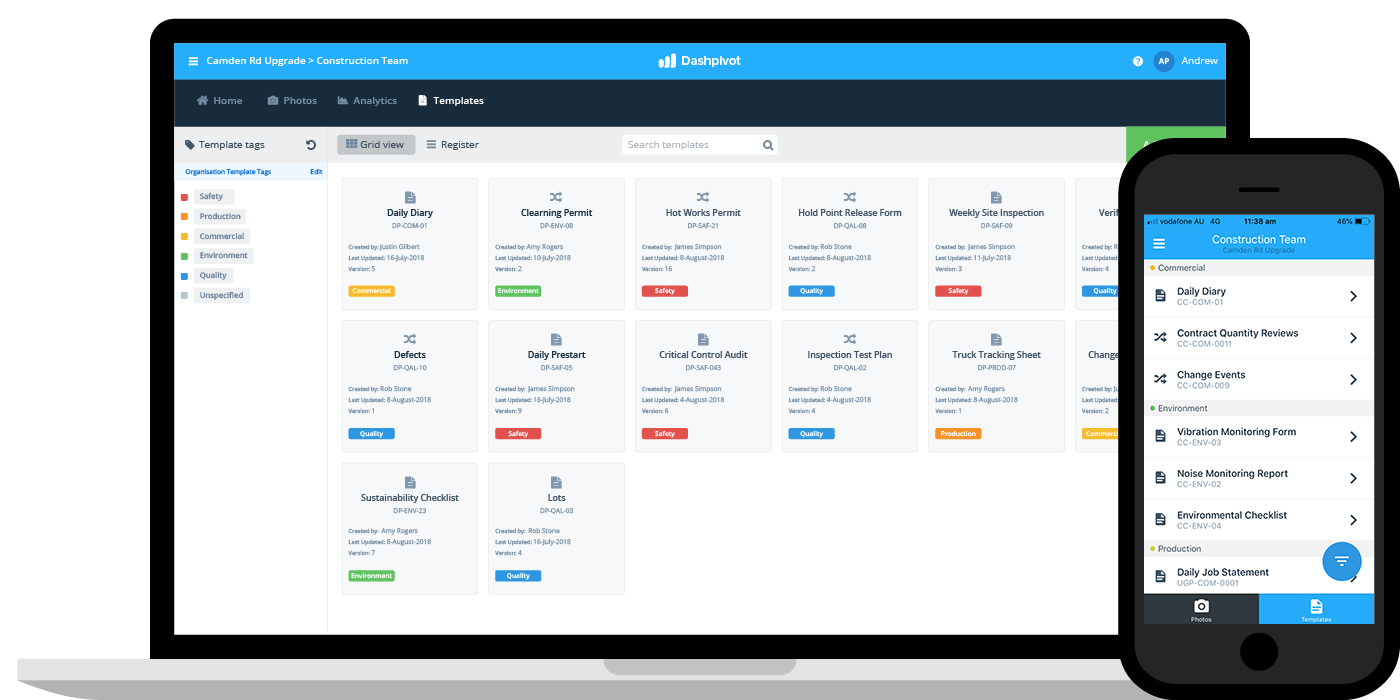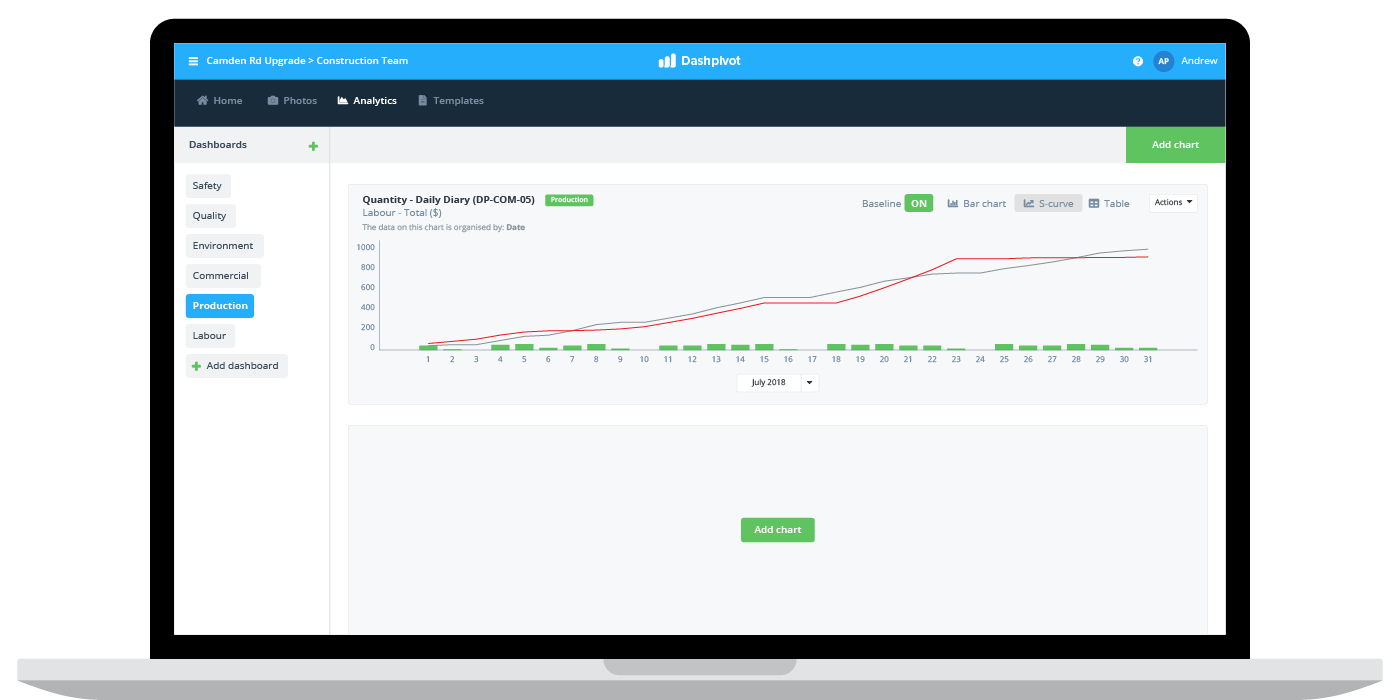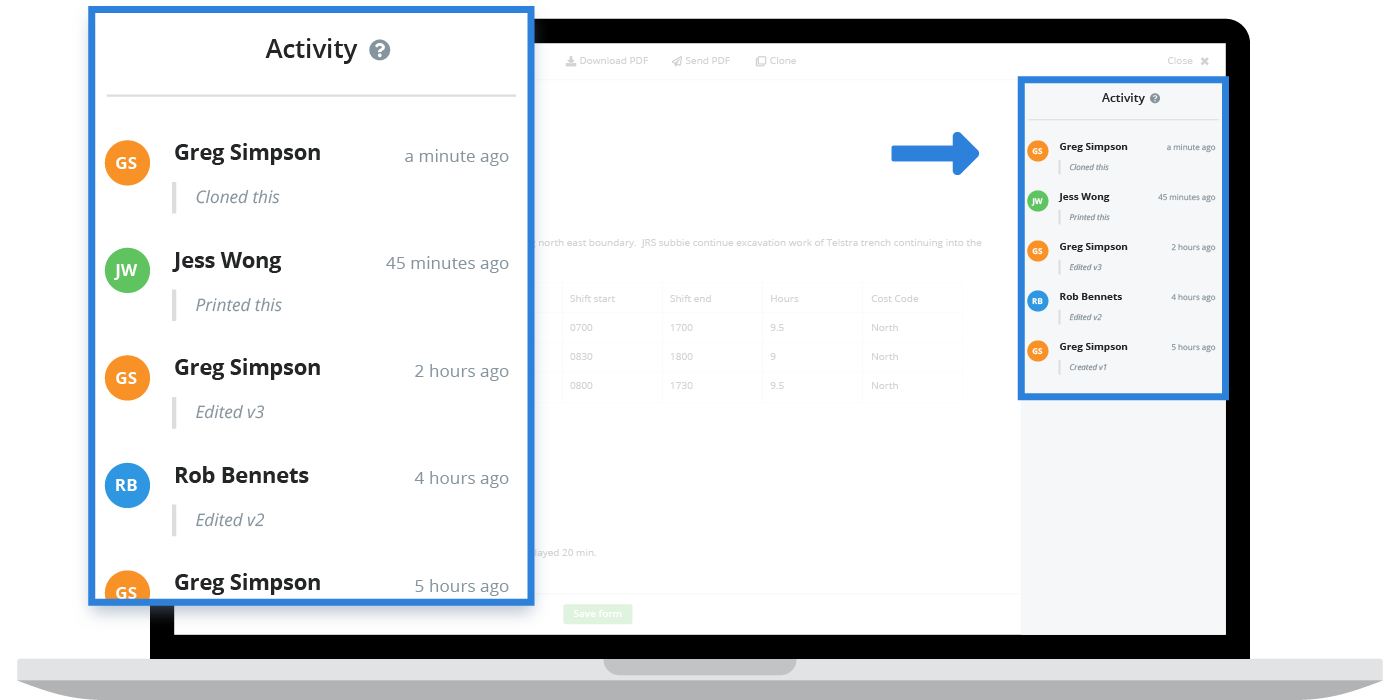Production – Examples of project controls

Example of project controls: Understand what's happening to make informed decisions
What are project controls?
Companies in the industries - construction, oil and gas, mining, energy and others - typically conduct their work in the form of projects, which are classified as an 'enterprise' or effort which is specifically planned to achieve a particular aim.
When it comes to these projects, the chief aim is the delivery of the project or asset, which might be to create a bridge, lay a road, make a mine operational or install a gas pipeline - but within this overarching goal, there are a number of parties who are simply trying to get their work done and deliver their project within the project or phase of works on time and on budget.
This is when project controls become so important.
Project controls are the data gathering, management and analytical processes used to predict, understand and influence the time and cost outcomes of a project.
In other words, project controls are the mechanisms and processes with which all companies working on projects use to attempt to deliver on time and on budget.
A company without project controls is operating in the dark with little to no visibility of what is going on and importantly, no way to influence the outcomes. While a project with multiple parties who lack sufficient project controls is a delay and budget headache waiting to happen; with one party's delay causing a snowball and domino effect all the way down the chain of contractors and subcontractors before the project is inevitably delivered late and overbudget.
Why have good and reliable project controls not been possible to date?
The primary reason that project controls have been lacking in the last - and the reason that so many industrial projects are still delivered late and overbudget is that most companies are running their projects across fragmented systems and tools.
On the surface, it may seem okay to manage individual jobs and tasks with word docs, excel spreadsheets, paper and PDFs. But this fragementation of data leads to unstandardised and missing inforamtion - which makes it impossible to build good and reliable project controls.
Good project controls begin at the source of information - the place where important project information is captured; and this is on site.
In the past, industrial companies have relied on rigid and fragmented systems and tools to get their work captured and organised. Some people on site still use paper, others use standalone apps, and others use a mix of spreadsheets and word docs.
When data is captured this way, all of the information from these different sources is unstandardised. Office personell spend hours and days combining data sources into spreadsheets, but some data is missed or lost, and all of it is late and delayed.
Examples of good project controls
The central element of good project controls is to be pushing and pulling clean and accurate data through your internal management system.
And your internal management system is ideally an integrated management system; a single system which controls and maintains your information.
Today, complete control over your data - from the site all the way to project analysis and planned vs. actuals can be conducted over a single integrated management system. This saves your people incredible amounts of time that they would have spent converting data between systems and double handling information. But more importantly for project controls, it ensures that your data is accurate and real-time, giving you the ability to make informed decisions about what to do based on what's happening now.
Examples of forms, document and clean data control
The key to gathering that good data in an industry riddled with important forms and documents is to digitise these forms and documents. And not any digital form or document - including word and excel docs.
In order to get those real-time project insights and controls, you need documents which are entirely digital and connected through your management system 'stack'.
Using standardised templates and forms which are created in, completed in, and then analysed in a single platform ensures your data stays clean and coherent.
What does this look like?
A document and form management like Dashpivot enables companies to build (or choose) all of their forms, including safety, environmental, commercial and production forms.
Once created and stored in the cloud, all of these forms can be deployed to specific projects and teams. Projects and teams can access and complete these forms via computer, mobile or tablet, and all of the data captured is piped straight back into the platform. This eliminates double handling and ensures that everyone is using the exact form they should be using.

Try using Dashpivot for free now and see what real project controls look like.
Examples of structured baselines, databases and lists
Understanding what's happening on site or in the field is only one component of getting powerful project controls. The other equally important component is being able to compare what's actually happening with that was planned to happen.
Knowing that you have laid 500 metres of paving at the end of September isn't very helpful if you don't know how you are tracking in reference to the project plan. This is where setting and managing your baselines and databases becomes incredibly important.
Using your project management tool or system, you want to be able to setup baselines and forecasts which you can reference your progress against.
Inside of Dashpivot, we call this section lists. In lists, you can input your baselines and forecasts for any item or activity, including paving, excavating, concreting, financial costs and more. You then reference these list items in your forms (from simple dropdowns and such) and can then accurately compare what people are inputting on site to what was expected through real-time analytics.
Examples of real-time analytics and insights
Once you have standardised and digitised how data is being collected and what it is being measured against, you can begin to get that real-time data which has eluded you for such a long time.
In Dashpivot, real-time data is most easily displayed in a visual format in the form of dashboards and graphs. These graphs are infinitely flexible, with the only contstraint on what you can see being the data you have collected on site - which is derived from the forms you built for your teams.
Build the right forms, and you can get any insight you want.
You can display your planned vs actual costings or production in real-time, and you can forecast what the current trajectory will result in. Getting real-time data and accurate forecasts enables you to make smart decisions now about what to do. Rather than being told you're a few weeks behind schedule at the 3 month mark, you can see that you are one day behind schedule on day 4. This enables you to make course-corrections which prevent those big cost blowouts.

Example of version and auditing controls, and photo and video evidence
Outside of these progress and project delivery project controls, we all know there are some organisational project controls which are important to maintaining a compliant and organised company.
Luckily, when you use a project control system, most of this work is done for you.
Another benefit of having entirely digital documents is that software finds it easy to track versions and changes. The same integrated management system which gives you digital forms and documents automatically tracks the changes (including metadata like who made the change and when) to any document. And as we mentioned previously, the version control is automatic too, meaning projects and teams can only access the same latest version of any document, eliminating the potential for people using old or redundant documents which should have been taken out of circulation years ago.

Photos and videos are also important for project controls. Photos and videos provide a visual timeline view of everything happening on your projects, enabling you to support your planned vs actuals and the reasons why work is ahead or behind schedule with some tangible insights.
On projects, there are also some inevitable disputes which arise because of delays, events and changes. These delays can often be sorted out by simple coordination, but they can go further and require litigation at times. In order to avoid unfair charges and disputes, photo and video evidence should be a core part of your project controls.
Most project control softwares or systems will include a progress photo documentation section for photos and videos captured on site, which will be captured with the systems app and then piped straight into an organised cloud-based library for safe record keeping.
Example of good project architecture and the master view
And lastly, a number of companies in the industries are multi-project parties, who run a number of projects concurrently. This layers in some added complexity in terms of how you manage your forms, photos and data - unless you use a system which has been architected for this problem.
Software designed specifically for project and production control will give you the views, permissions and structure to be able to manage multiple projects and teams.
This type of system gives you the controls you'll need to manage multiple teams across multiple projects. All of your data will stay neat and organised; all of your teams will have access to what they need (and only what they need); and all of your data can be easily split and displayed to understand what's happening on one project, or one team, or within a single function - to give you unprecedented control over your projects - and to deliver on time and on budget.
Since the introduction of Dashpivot to our construction team, the visibility and communication through photos and online forms has increased exponentially. The whole team has live updates of works being completed in real time and with exact locations.
Daniel G.
M&E Supervisor | Source: Capterra
